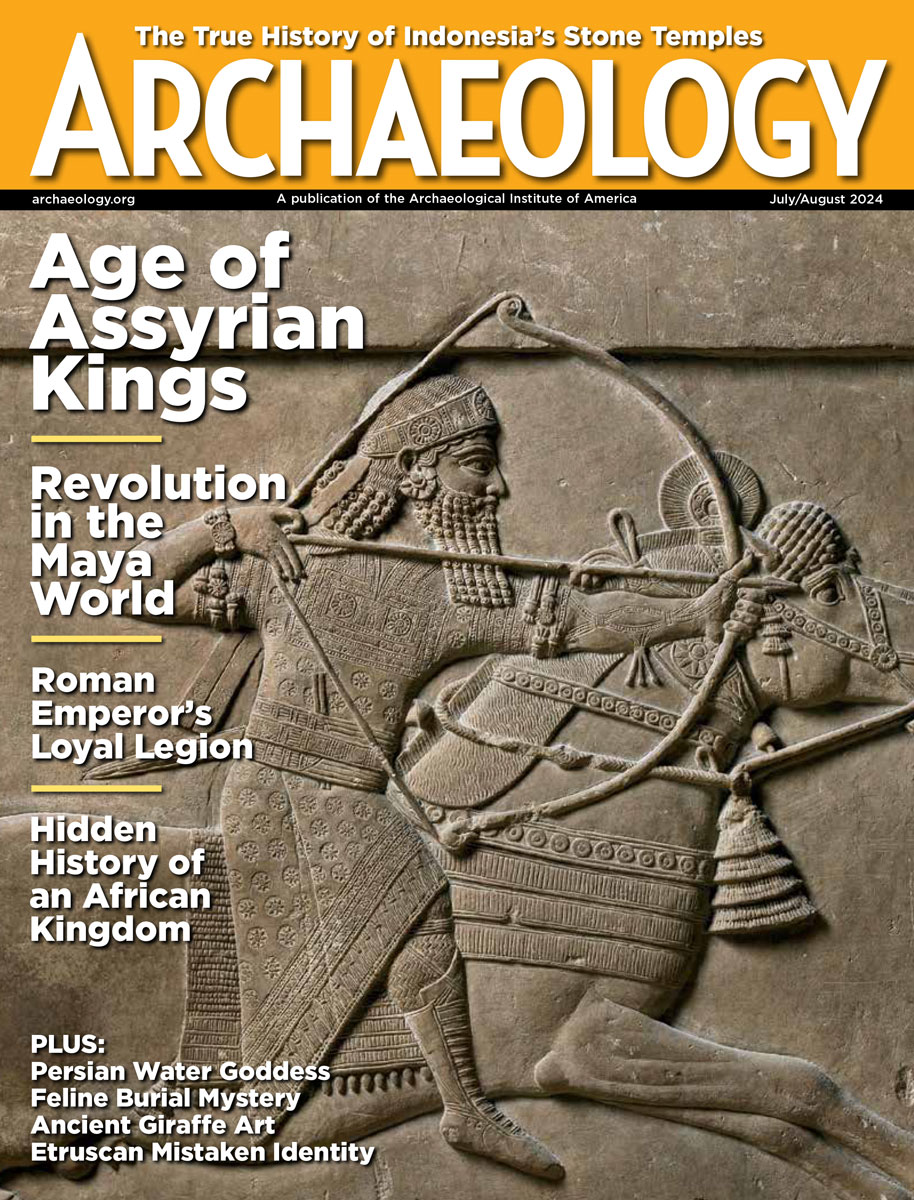Friday, October 2
by Jessica E. Saraceni
October 2, 2009
 A polychrome mural was uncovered on the face of a temple at Peru’s Lambayeque site of Chotuna.
A pit beneath the back room of an inn in Staffordshire, England, yielded an intact, seventeenth-century witch bottle. Archaeologists will see if it contains nail clippings, hair, bellybutton lint, pins, or nails intended to ward off witches. Â
Archaeologist Rob Symmons thinks that the sculpture of a young boy unearthed at England’s Fishbourne Roman Palace may represent a young Nero. “We have always assumed he was related to the Royal family who lived here but it may be that it is even more special and is a rare depiction of Nero,” he said. Tests will be conducted on the head later this month. Â
Researchers have analyzed the tooth enamel of people buried in a Roman cemetery in Hampshire, England, and found that some of them were migrants from southern and central Europe.  Â
A flag flown by South Carolina Citadel cadets during the Civil War has turned up in museum storage in Iowa. Â
Articles about 4.4 million-year-old “Ardi,” the earliest-known human ancestor, continue to appear. This one has a slide show of digital images and sketches of the reconstructed Ardipithecus ramidus skeleton.   Reuters has marked the discovery on a map of Ethiopia. Â
A professor of history in Hungary reportedly thinks that he has found the cellar of the house where the Duke of Wallachia, Vlad III Tepes, lived in the 1460s. A 1489 document refers to the building as “Drakulya House.”Â
Comments posted here do not represent the views or policies of the Archaeological Institute of America.









